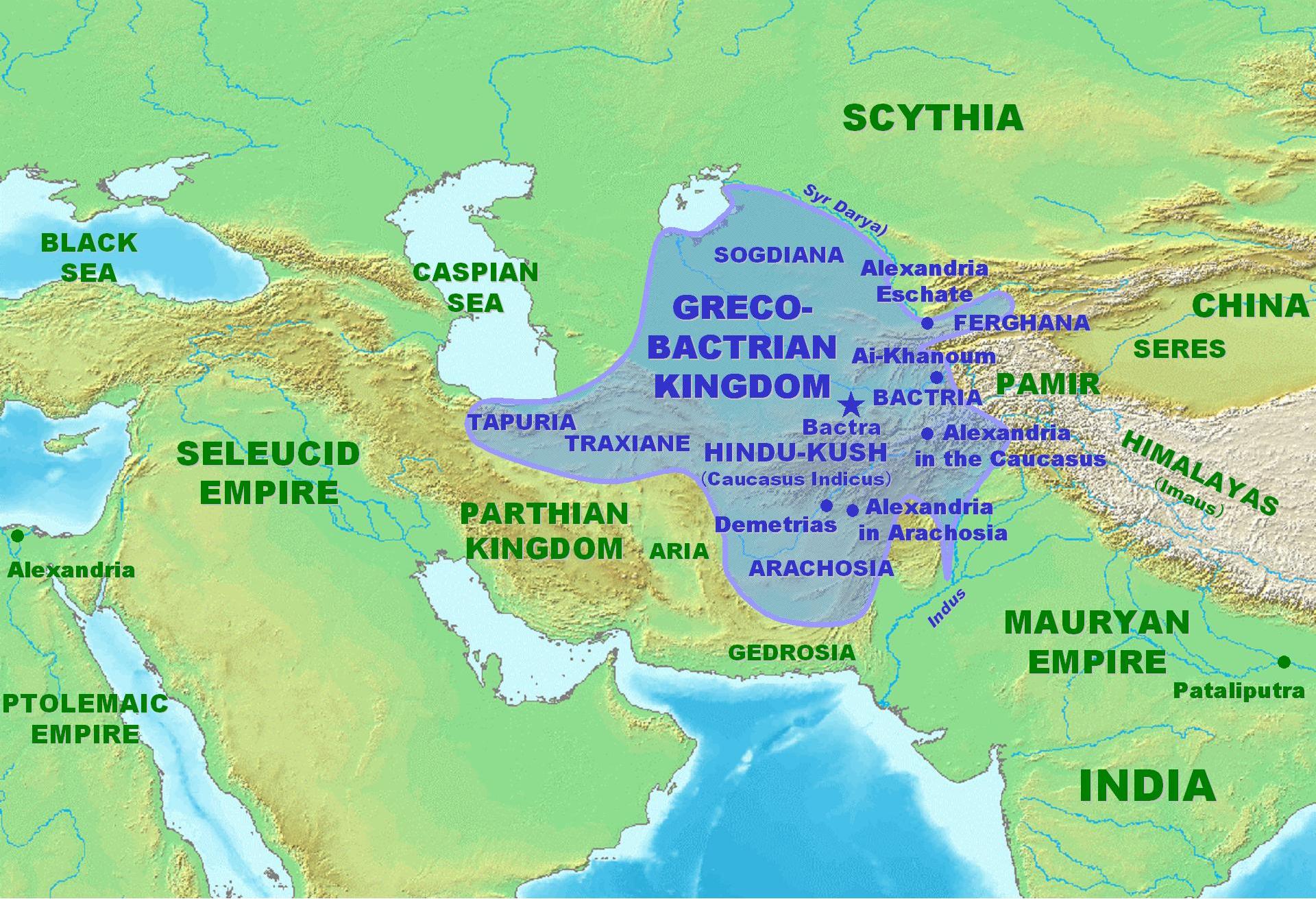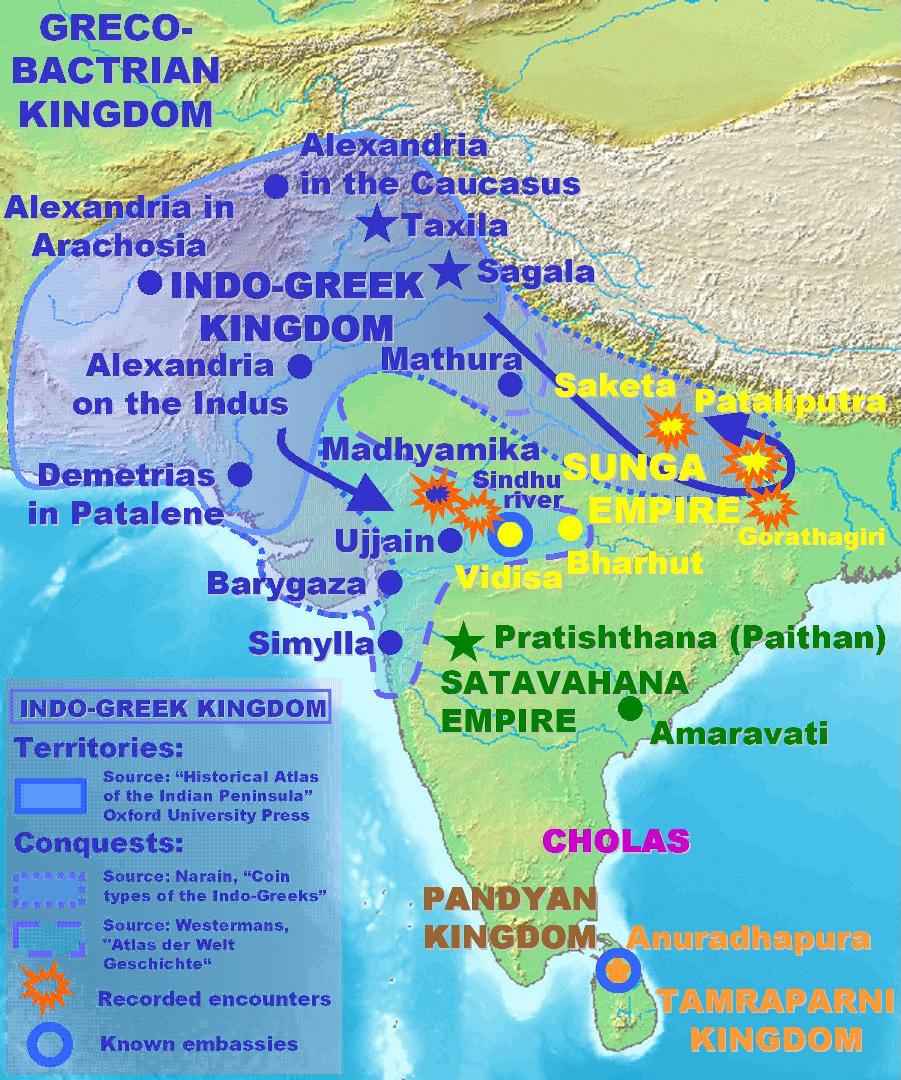So, I was reading about Xerxes, because I’ve recently watched 300 Part II and it’s very interesting how in a short period of time, in a very small part of the world, entire kingdoms formed and fell, armies moved across oceans and civilizations blossomed and razed to the ground. While reading about Xerxes (and this is Wikipedia, everything is linked and I often go binge-wikiing), I started reading about his father, Darius I. Darius died fighting revolts from the Greeks, Egypt and the Babylonians, amongst others. But before he did that, he went a little East to raid and conquer this wonderful place called Afghanistan. Along with that, he decided to conquer Taxila. Wait, Taxila? Isn’t that supposed to be part of Indian history? I definitely read about it. Interesting, reading on!
So, Darius conquered Afghanistan and Taxila and called it his own, making it part of the Persian Achaemenid Empire. He asked a Greek, Scylax of Caryanda to explore the area. The person who recorded all of this was another Greek, Herodotus, who called the area Hindush/Sindh/Taxila Satrapy (Satrapy means province) based on the Old Persian name for the Indus river – Hinduš. This area formed the Eastern edge of the Persian Empire and thus the farthest point of the ‘known world’ (meh). Anyways, according to Herodotus, Scylax started his journey from Gandhara (wait, what?) which was between the Kabul and Indus Rivers.
Ok, so two big names in Indian history – Gandhara and Taxila were actually in Afghanistan and West Pakistan? I know the Indus valley civilization was based in Pakistan, but this goes beyond! After all, Gandhara plays an important role in both the Ramayana and the Mahabharata. The Mahabharata talks of Shakuni, the Prince of Gandhara, which was close to the Kuru Kingdom. This was around 1000 BCE (take all these numbers with a pinch of salt, there’s something really off with marking everything as AD/BC/BCE), which is technically after the Vedic Period of Indian history. That means that before the Persians and the Greeks stopped by, India already had written pretty much everything about the Universe, how to rule and everything else under the Sun, that too in poem form. Cool.
Moving on, the next person to visit the region was Alexander the Great, who was definitely interested in taking all of India, but, as the story goes, a Sanyasi told him that he’d not be able to cross the river Ganga and would have to turn back, which he did, because his army mutinied near the Beas river (my beloved Beas! The Armies feared Alexander’s interests in moving further East, where the Nanda Empire thrived, with their 200,000 infantry, 80,000 cavalry, 8,000 chariots, and 7,000 war elephants). All of this is recorded in a book called Indica by one of Alexander’s main historians, Arrian (and by Plutarch in Parallel Lives). He’s one of the historians to record that no Indian had till then gone out of their country to war. After Alexander’s death, his Macedonian Empire fell and was replaced by the Seleucid Empire. The Seleucid Empire was run by Seleucus I Nicator, one of Alexander’s generals. Seleucus came to India too, but instead of conquering it, he made a deal with Chandragupta Maurya to let him form the Mauryan Empire and marry Seleucus’ daughter in exchange for five hundred elephants. Chandragupta was a student of Chanakya and both of them were in Taxila when Alexander came by. With Chanakya’s help, Chandragupta beat the Nanda Empire (the same one which Alexander’s army was afraid of, partly because a lot of them had been killed by King Porus/Parvateshwara of Punjab in the Battle of the Hydaspes River, which is Jhelum, also now in Pakistan). Upon the formation of the Mauryan dynasty, India was technically two parts – the Mauryan Empire from Taxila in the West to the Eastern parts of Bangladesh and into the Deccan Plateau, with the exception of Kalinga, Pandya, Chera, Chola and Satyaputra kingdoms in the South. Chandragupta’s grandson, Ashoka the Great was able to unite all of those regions, but we are getting ahead of ourselves, so lets get back to Taxila.
Around the time when Ashoka was unifying India, the area in the Hindu-Kush range in Afghanistan freed itself from the Seleucid Empire and came to be called the Greco-Bactrian Kingdom (or the Indo-Greek Kingdom) under the rule of King Diodotus I of Bactria. They made contact with China and India, so much so that they even sent an Ambassador (named Megasthenes) to Chandragupta’s court. One of the most famous of Indo-Greek kings was Menander I Soter, who is also known as Milinda I the Savior in the Pali script. (Hmmm, Milinda? I’ve studied about him in history. Pali is an Indo-Aryan language descended from the Prakrit language, which itself was derived from Sanskrit). Milinda’s rule was after the fall of the Mauryan Empire, so there was plenty of room to expand. Milinda was born in the Caucasus region, which is between the Caspian Sea and the Black Sea (modern day Georgia, Armenia, and Azerbaijan; huh, any relation to Caucasian, which is what pretty much every White person is called nowadays? Quick wiki-surfing tells me – Yes! Some German Philosopher Christoph Meiners classified all peoples as two races – Caucasians and Mongolians and he thought the Caucasians were more attractive, sensitive and virtuous). Now, Ashoka had taken up Buddhism after his bloody war against Kalinga and he spread it across the region as “a doctrine that could serve as a cultural foundation for political unity”. (huh, much like Christianity was the cultural foundation for political unity in the West; albeit with a lot of bloodshed to accompany it. Imagine a Buddhist India!)
Milinda also picked up Buddhism and is famous for his discussions with the Buddhist sage Nagasena. His capital city was Sagala, which is modern-day Sialkot, in Pakistan. This was one of the places where Buddhism flourished and cross-pollinated with Greek culture. (Remember the famous Buddhas of Bamiyan, built in Bamwam valley in the Hazarajat region of central Afghanistan in Greco-Buddhist style, also known as Gandhara style? They were built in the 500-600 AD, long after all of these events happened. They were destroyed by the Taliban in 2001. Because.)
Milinda attacked all the way till Ujjain as well as Pataliputra (near Patna, erstwhile capital of the Mauryan Empire), extending his Kingdom from Central Afghanistan (the region called Bactria) to Punjab, Haryana and parts of Himachal Pradesh and the Jammu region in India. So, the Indo-Greek Kingdom or Graeco-Indian Kingdom went on till 10 AD, when it was dutifully destroyed by the invasions of the Indo-Scythians (Who, what now?). The Scythians (or Sakas) were a tribe of Iranian origin. They came from modern-day Kazakhstan (the Aral Sea area) and took over Sogdiana, Bactria, Arachosia, Gandhara, Sindh, Kashmir, Punjab, Haryana, Rajasthan, UP and Bihar (mostly) in that order. The Indo-Scythian rule ended when Chandragupta II of the Gupta Empire beat them in AD 395. However, modern communities such as the Jats, Lohars and Tarkhans are said to be derived from the Scythians. The Scythians had three capital cities – Sigal, Taxila and Mathura. The Scythian Empire was taken over by a tribe that had been a part of the Yuezhi confederation(Central Asian/Chinese), the Kushans, who formed the Kushan Empire in India. They had four capital cities (because more is better) – Bagram, Peshawar, Taxila and Mathura (It’s there, it’s all set up, why not use it?). One of the most famous Kushan Kings was Kanishka I (huh? I’ve read that name! Kanishka was a very famous Indian King! He wasn’t Indian, per se? Weird!)
The last of the Kushans (Vasudeva I) was beaten by the Sassanid Persians who formed the Indo-Sassanid Empire, which was eventually beaten by the Hephthalites in the North and West and Gupta Empire replaced the entire Indo-Scythian-Kushan-Sassanid Empire.
Lets stop here. Revision time. So, till now, who all has ruled over India, apart from the indigenous Indians? The Persians, the Greeks, the Caucasians, the Iranians, the Central Asians, the Sassanids and so on. There has been regime change umpteen number of times in a short, short period and our history and culture are forever linked to Iran, Afghanistan, the Arabic countries, Kazhakhstan and Greece, to say the least. So much so that even one of our old Gods – Mitra, is found both in Indian as well as Iranian texts and is part of the Vedas, Zoroastrian Avesta scriptures as well as Greek and Buddhist tradition.
In fact, even the name we call ourselves so proudly – Indians, isn’t of Indian origin. Now, why was I studying this? Because it’s interesting to note where all we’ve come from. I’m from Punjab, in India, so my ancestors are from pretty much everywhere from Greece and Iran to Kazakhstan.
And you thought Greek history was interesting.
#
A Note on Sources –
All of the above history is derived from Wikipedia. Wikipedia is indisputably the most inaccurate source of information, there being a hint of bias in every edit ever made. Therefore, please take dates, facts and lineages with a pitcher of salt water. I’ve listed my sources below. If anyone would like to correct me and thus contribute to this article, please use the comments form below, you’ll only be making my knowledge of Indian history richer.
http://en.wikipedia.org/wiki/Manu_(Hinduism)#The_Great_Deluge
http://en.wikipedia.org/wiki/Behistun_inscription
http://en.wikipedia.org/wiki/India_(Herodotus)
http://en.wikipedia.org/wiki/Darius_the_Great#Invasion_of_Indus_Valley
http://en.wikipedia.org/wiki/Scylax_of_Caryanda
http://en.wikipedia.org/wiki/Gandhara#Epic_and_Puranic_traditions
http://en.wikipedia.org/wiki/File:Ancient_india.png
http://en.wikipedia.org/wiki/Greco-Bactrian_Kingdom
http://en.wikipedia.org/wiki/File:Greco-BactrianKingdomMap.jpg
http://en.wikipedia.org/wiki/Chandragupta_Maurya#Foundation_of_the_Maurya_Empire
http://en.wikipedia.org/wiki/Mauryan_Empire
http://en.wikipedia.org/wiki/Ashoka_the_Great
http://en.wikipedia.org/wiki/Buddhism#Development_of_Buddhism
http://en.wikipedia.org/wiki/Milinda
http://en.wikipedia.org/wiki/Sagala#Indo-Greek_rule
http://en.wikipedia.org/wiki/Indo-Greek_Kingdom
http://en.wikipedia.org/wiki/Strato_II_and_III
http://en.wikipedia.org/wiki/Rajuvula
http://en.wikipedia.org/wiki/Indo-Scythian
http://en.wikipedia.org/wiki/Kushan_Empire
http://en.wikipedia.org/wiki/Kanishka
http://en.wikipedia.org/wiki/Gupta_Empire
http://en.wikipedia.org/wiki/Mitra
http://en.wikipedia.org/wiki/Alexander_the_Great#Revolt_of_the_army
http://en.wikipedia.org/wiki/Indica_(Arrian)
http://en.wikipedia.org/wiki/Caucasus
http://en.wikipedia.org/wiki/Caucasian_race
http://en.wikipedia.org/wiki/Name_of_India
Also suggested reading (because I’ll never read this stuff anyways) –
http://www.hup.harvard.edu/catalog.php?isbn=9780674992979
http://www.fordham.edu/halsall/ancient/arrian-bookVIII-India.asp
http://www-groups.dcs.st-and.ac.uk/~history/Indexes/Indians.html
http://eawc.evansville.edu/inpage.htm
http://en.wikipedia.org/wiki/%E1%B9%9At%C3%A1




